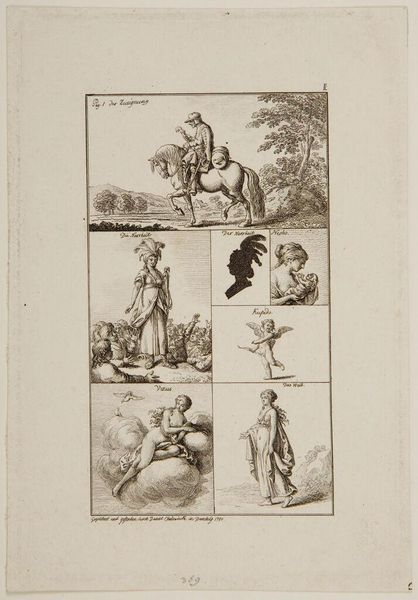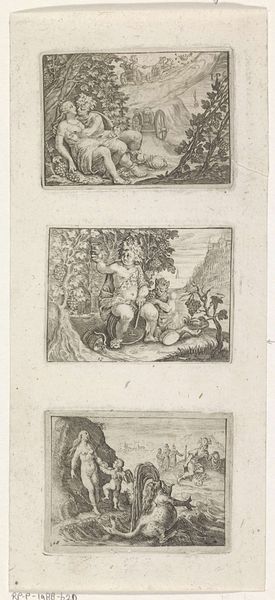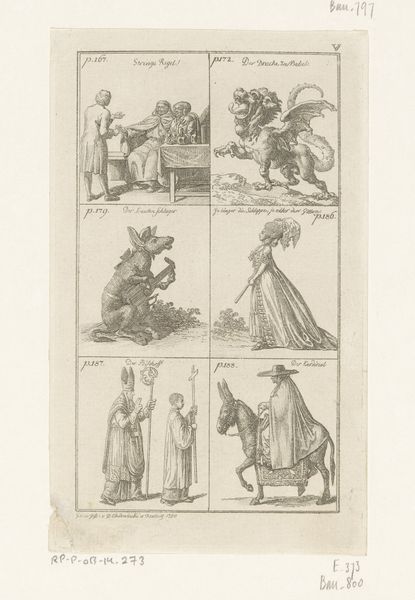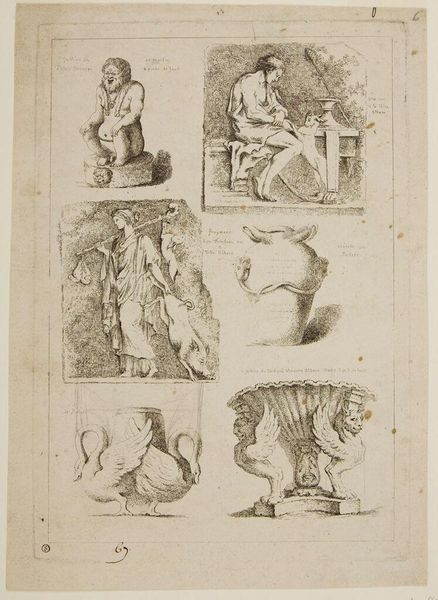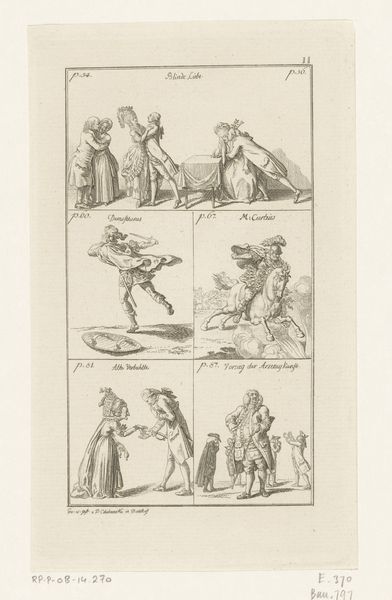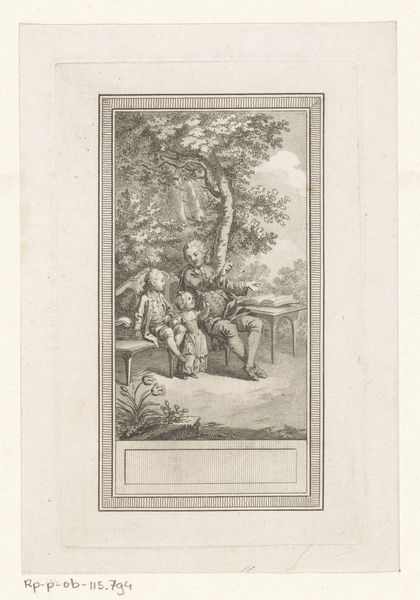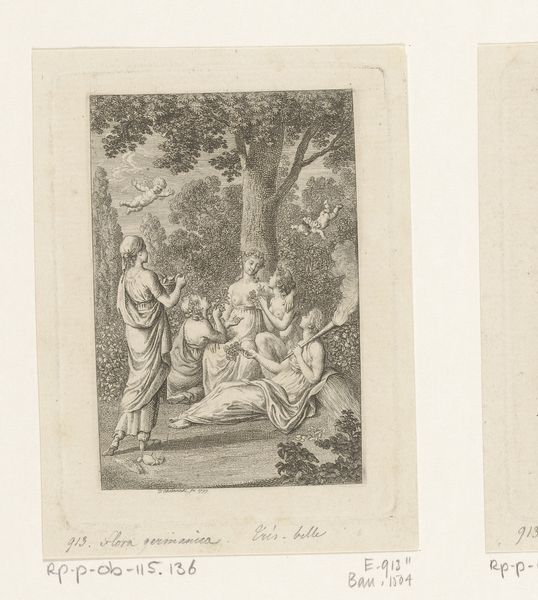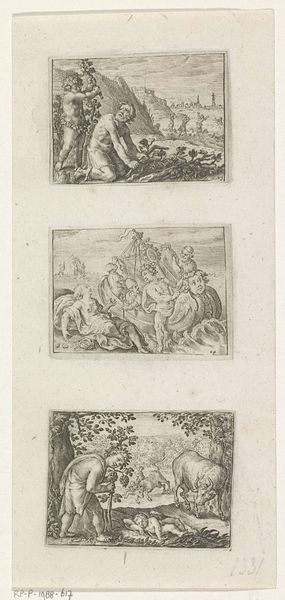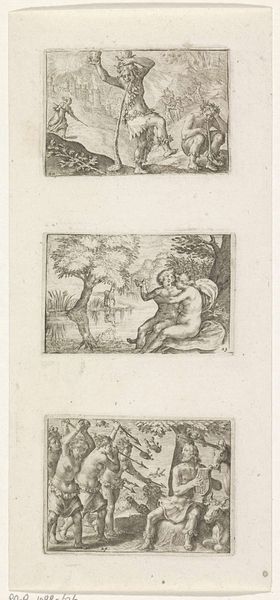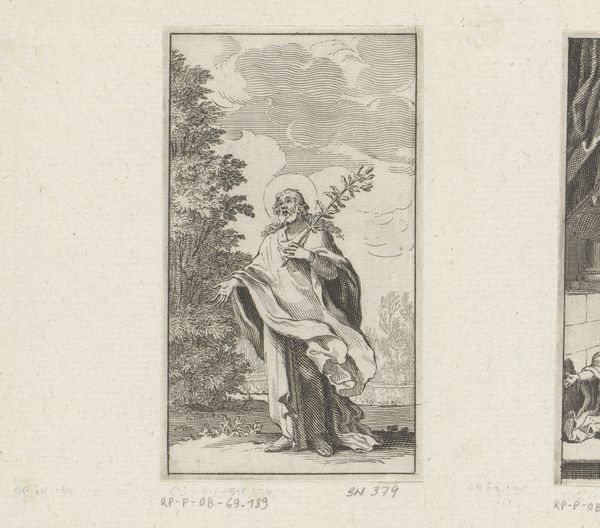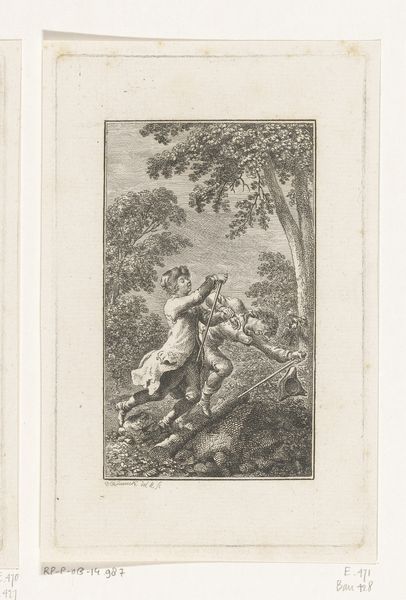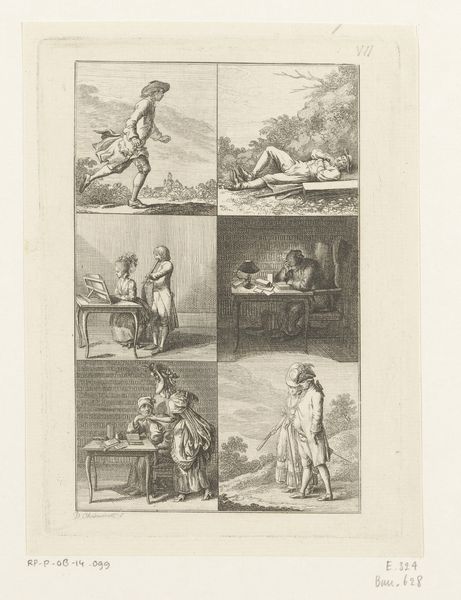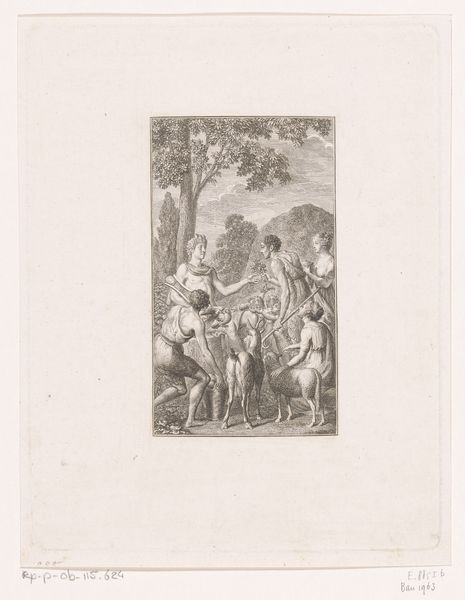
Dimensions: height 164 mm, width 98 mm
Copyright: Rijks Museum: Open Domain
Editor: Here we have Daniel Chodowiecki's "Blad uit De Lof der Zotheid", an etching from 1780. It's fascinating how he’s packed so many miniature scenes onto one page. The varied compositions make each component so unique, yet they seem almost disparate at the same time. What stands out to you most about the organization of this composition? Curator: I observe the artist’s sophisticated orchestration of space through the use of linear perspective and intricate line work. Note how each vignette, framed within an implied grid, operates as an autonomous unit, yet contributes to the overall formal balance of the composition. The stark contrast between the heavily worked areas and the expanses of untouched paper serves to create a visual rhythm that guides the viewer’s eye. Editor: So it’s the balance and the rhythm created by these contrasts that provide its structure? It feels so… planned, even though the themes seem quite diverse. Curator: Precisely. The formal relationships supersede any narrative connections. Consider, for example, the figure on horseback in the upper register, juxtaposed with the silhouette profile. Although different in subject matter, they are linked through the commonality of stark outlines and tonal values. Can you see how this principle operates throughout the print? Editor: Yes, I see it now! The way he uses line weight is very strategic too. The varying thicknesses give each scene its own presence. Curator: Indeed. Chodowiecki employs line as a primary tool, not only for delineation but also for creating depth and texture. This conscious manipulation of the medium is a key aspect of the work’s formal success. Editor: That's insightful, I'm seeing new layers now. This intense focus on structure and form has definitely changed how I viewed the print. Curator: Agreed, this type of close looking pays dividends! Now, how might understanding these visual elements deepen our appreciation of other prints from this era?
Comments
No comments
Be the first to comment and join the conversation on the ultimate creative platform.
